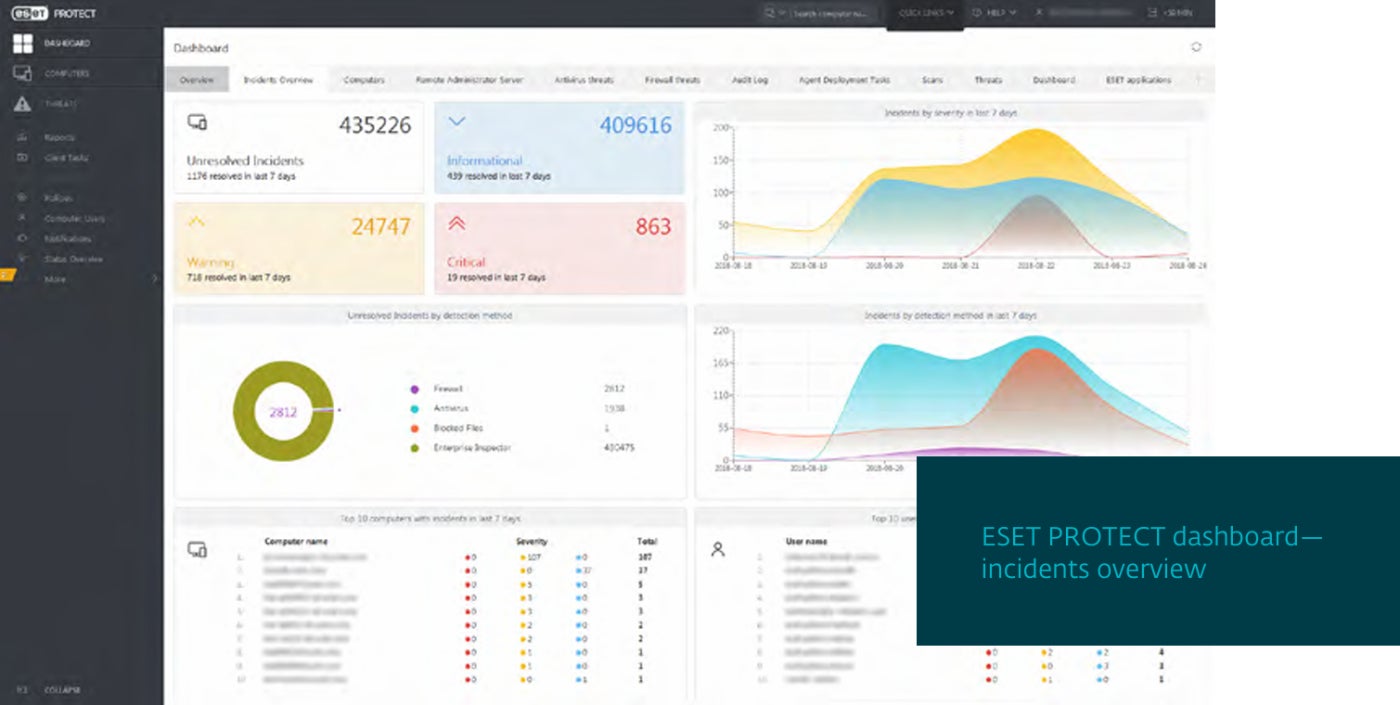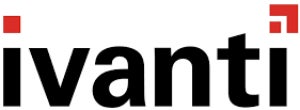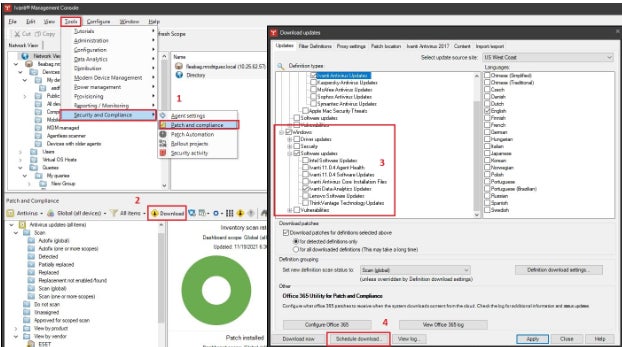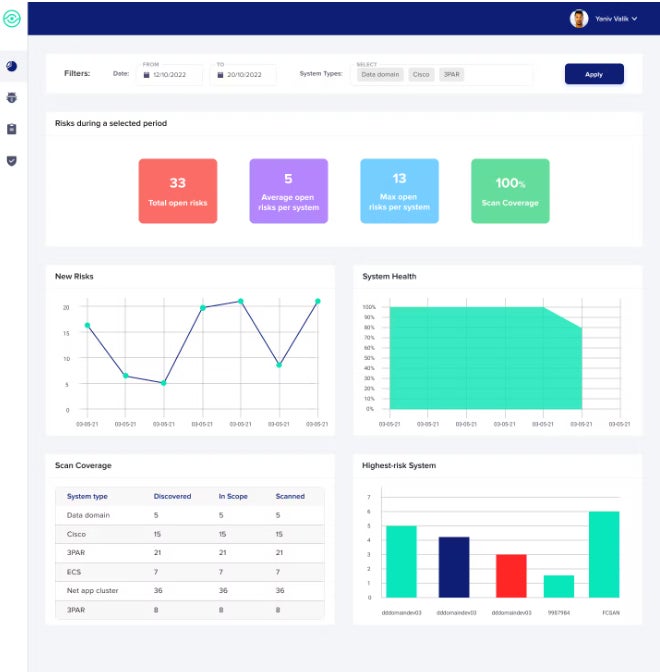
There are more vulnerabilities around than ever. The Verizon Data Breach Investigations Report highlighted an almost 200% growth in the exploitation of vulnerabilities in 2023. In the first seven months of 2024, new vulnerabilities rose by another 30% compared to the previous year. No wonder vulnerability management tools are becoming a staple of the enterprise cybersecurity arsenal.
“Vulnerability management is a core function of cybersecurity,” said Michelle Abraham, research director, Security and Trust at IDC. “Leaving vulnerabilities without action exposes organizations to endless risk since vulnerabilities may leave the news but not the minds of attackers.”
Many vulnerability management tools have similar features. But when I looked into them more closely, I noticed that they each have their own focus or approach. Some are more specialized than others. I compared them based on price as well as four key features:
Be aware, however, that an apples-to-apples comparison based on price is impossible due to the different ways vendors price their products and services as well as a lack of transparency on pricing.
| Starting price | Cloud or on-prem | Cybersecurity suite features | Automated discovery | Automated remediation | |
|---|---|---|---|---|---|
| Tenable | About $4,000 per year for 100 assets. | Cloud-based. There is a separate on-prem suite called Tenable Security Center that includes vulnerability management. | Vulnerability management, web application scanning, cloud security, identity exposure, operational technology security, attach surface management, and risk assessment. | Yes | Yes |
| ESET | $275 for five devices per year for the ESET Protect package that includes ESET Vulnerability and Patch Management | Cloud-based. A separate on-prem suite is available that includes vulnerability management | EDR, server security, mobile threat defense, encryption, threat defense, cloud protection, vulnerability & patch management, MFA, and MDR | Some automated discovery but not as broad as some of the others | Some auto-remediation capabilities are included |
| Syxsense | $9 per device per month or $960 per year for 10 devices | One version for the cloud and another for on prem | Patch management, vulnerability scanning, IT management, mobile device management, and zero trust | Yes | Yes |
| CrowdStrike | $184 per year for the full suite and about $40 per year for Exposure Management | Cloud-based | EDR, antivirus, threat hunting/intelligence, exposure management, AI, threat hunting, cloud security, SIEM, data protection, automation | Yes | Yes |
| Qualys | $295 per year for the small business version and about $2000 for the enterprise version. | Cloud-based with an on-prem version available. | Asset management, vulnerability & configuration management, risk remediation, threat detection & response, EDR, cloud security, and compliance. | Yes | Yes |
| Rapid7 | $6 per month per asset or $2 per month per asset for a 500-asset license. | Cloud and on-prem | AI engine, XDR, exposure management, and attack surface management. | Yes | Yes |
| Ivanti | $4 per month per user. | Cloud or on-prem | Discovery, IT automation, real-time insight, endpoint management, network and endpoint security, supply chain, and service and asset management. | Yes | Yes |
| StorageGuard | $200 per month for up to 50 systems. | Cloud | No | Yes | Limited |
Tenable Vulnerability Management takes a risk-based approach to vulnerability management. It focuses on network visibility in order to predict when attacks will occur and to be able to respond rapidly when critical vulnerabilities are in play. A 60-day free trial is available.
SEE: How to Create an Effective Cybersecurity Awareness Program (TechRepublic Premium)
I selected Tenable as the best overall vulnerability management tool overall for many reasons. It is the market leader among vulnerability management tools with a 25% market share. It includes a wealth of features and ticks just about all the boxes. It contains hundreds of integrations with other platforms and security tools that make automation of workflows easy and reduce the number of resources needed to keep the enterprise safe.

| Pros | Cons |
|---|---|
| Fully integrated into the broader Tenable One platform. | Some users report that support could be improved. |
| Continuous, always-on discovery and assessment | Real-time scanning and overall scanning speed could be improved. |
| Threat intelligence | Not the cheapest solution on the market. |
| Automated vulnerability prioritization. | Better suited to experienced IT professionals |
| Real-time visualization of risk, and tracking of vulnerabilities, assets, and remediations. | |
| Vulnerability risk scores to identify risk. |

ESET Vulnerability and Patch Management can automatically scan thousands of applications for any of tens of thousands of common vulnerabilities and exposures. It can prioritize and filter vulnerabilities by exposure score and severity.
I liked ESET as it is easy to install and run. This makes it attractive for SMEs and larger organizations that lack IT and cybersecurity resources.

| Pros | Cons |
|---|---|
| Simplifies patching by prioritizing critical assets and scheduling the remainder for off-peak times. | Automated discovery and remediation features lack the scope of some other solutions. |
| Protection against ransomware and zero-day threats. | More focused on small and mid-size organizations rather than the enterprise market. |
| Easy to set up, use, and maintain. |

Syxsense Enterprise includes patch management, vulnerability scanning, IT management, and mobile device management within its vulnerability management platform. Most recently, it has added integrated remediation features as well as zero trust. Everything is now combined into one console via Syxsense Enterprise.
Syxsense began life as a patch management specialist. Building on that success, it has steadily expanded into a full featured vulnerability management suite. However, I noticed that it doesn’t encompass the breadth of security modules that many of the other vendors in this guide. It is missing SIEM, threat intelligence, and antivirus, for example. Despite that, I liked the tight focus on vulnerability and device management. For those that already have a security platform and just want to improve patch management and vulnerability management, Syxsense is a good choice.

| Pros | Cons |
|---|---|
| Excellent patch management functionality. | Syxsense was just acquired by Absolute Security, which could impede the high level of continuous innovation that propelled Syxsense to the forefront of the patch and vulnerability management field. |
| Tightly focused on vulnerability management. | Suite is missing elements such as antivirus, threat hunting, and SIEM. |
| Separate versions for cloud and on-prem. |

CrowdStrike Exposure Management grew out of an older product known as Falcon Spotlight, which I was already familiar with. I noticed how it broadens the capabilities of Falcon Spotlight by adding more of a risk management approach along with a host of AI-based capabilities.
CrowdStrike Exposure Management is a solid product in its own right. It is one part of a comprehensive suite with a wide range of security features. Most buyers will purchase the complete CrowdStrike platform rather than only the Exposure Management element. Known as the CrowdStrike Falcon Platform, it encompasses EDR, antivirus, threat hunting/intelligence, exposure management, AI, threat hunting, cloud security, SIEM, data protection, automation, and more, all from a single agent. Anyone needing a vulnerability management tool and a new security suite can’t go far wrong adopting the entire Falcon Platform.

| Pros | Cons |
|---|---|
| Vulnerability and patching orchestration. | Limited capabilities when it comes to scanning for misconfigurations in security applications. |
| Integration within the CrowdStrike Falcon. | More focus on the entire suite than on vulnerability management. |
| AI ties together threat intelligence with vulnerability assessment in real time. | |
| A single agent for all modules. |

Qualys Vulnerability Management Detection and Response takes the context of threats into account as a way to prioritize and remediate serious threats rapidly. I appreciated the value of its automated scoring methodology, known as TruRisk.
Qualys VMDR does a good job bringing together a set of key security functions, including vulnerability assessment, asset discovery, inventory management, and attack surface management. It is part of a large, cloud-based suite of security products. As such, I consider it to be a good choice for enterprises and larger businesses operating in the cloud.

| Pros | Cons |
|---|---|
| Broad range of vulnerability signature databases. | Can be challenging to install, learn, and use for less mature IT shops. |
| Real-time detection of vulnerabilities such as patches that need to be installed and misconfigurations. | Cloud and hypervisor support could be improved. |
| Automatically detects the latest superseding patch for the vulnerable asset and deploys it. | |
| Qualys is one of the market leaders in vulnerability management based on market share. |

| Pros | Cons |
|---|---|
| Automated remediation. | Best suited to knowledgeable security teams. |
| Automatic pen-testing. | Can sometimes be complicated to set up. |
| One of the top vulnerability management vendors per market share. | Some users note integration and deployment issues |
| Runs vulnerability scans across cloud, physical, and virtual infrastructure and automatically collects data from all endpoints. | Support responsiveness could be improved. |
| Security teams can streamline remediation activities such as vulnerability patching and containment. | |
| Integrates with a range of third-party tools including ticketing systems, patch management solutions, and SIEM. |

Ivanti has a long history as a top vulnerability management vendor. It offers tools you can deploy within the enterprise or as a service.
For me, Ivanti VMaaS stands out due to its pairing of vulnerability management as-a-service with expert security analysts, scanning tools, and processes that help businesses identify vulnerabilities on the network and in applications. But the company also offers top cloud-based tools such as Ivanti Neurons for risk-based vulnerability management.

| Pros | Cons |
|---|---|
| This fully managed service frees up personnel for other projects. | Some users complain of lack of support. |
| Easy-to-follow remediation plans. | Customization options are limited. |
| Risk scoring ensures remediation recommendations are focused on actions that target the most serious threats. | Competitive patch management products may be more comprehensive at discovering all endpoints operating on the network. |
| Automated workflows. |

StorageGuard by Continuity Software scans, detects, and fixes security misconfigurations and vulnerabilities across hundreds of storage, backup, and data protection systems.
Most tools in this guide provide broad coverage — either across the entire vulnerability management landscape or are part of large security suites that go far beyond vulnerability management. I picked StorageGuard as it takes the opposite approach. It is laser-focused on one aspect of this market: a comprehensive address to a major gap found in many vulnerability management products — storage and backup vulnerabilities and misconfigurations. StorageGuard fills that niche so well that I recommend its use in conjunction with some of the other tools listed here.

| Pros | Cons |
|---|---|
| Scans and finds weaknesses in storage and backup applications that other scanners miss. | Does not address traditional vulnerabilities in third party applications and OSes. |
| Users comment on ease of use and thoroughness in finding backup and storage misconfigurations. | Focused mainly on discovery of issues as opposed to resolution. |
| Provides proof of audit compliance against CIS Controls, NIST, ISO, PCI, NERC CIP, and others. |
According to NIST, vulnerability management is a “capability that identifies vulnerabilities [common vulnerabilities and exposures] on devices that are likely to be used by attackers to compromise a device and use it as a platform from which to extend compromise to the network.”
As well as mitigating configuration or code issues that might allow an attacker to exploit an environment, the definition is often broadened to include patch management, MDM, IT asset management, and EDR. The vulnerability management function is often integrated into a large security suite.
Vulnerability management can be broken into a series of steps, many of which are now automated:
They can be deployed as on-premises software, delivered as SaaS, or as managed services.
Vulnerability management as a managed service is delivered by a provider via the cloud rather than downloading and running on-prem software. It continuously identifies, assesses, reports, and manages vulnerabilities across cloud identities, workloads, platform configurations, and infrastructure.
Certain core functions are present in all top vulnerability management platforms. These include:
Those looking for a vulnerability management tool should ask questions such as:
Whatever tool you choose from the list above, the benefits of vulnerability management quickly show up in terms of fewer breaches, data that is better safeguarded, attacks being spotted far earlier than before, and added automation.
The tools covered here were selected based on analyst reports, peer reviews, and user satisfaction, as well as reviews posted in TechRepublic and other Technology Advice sites. I also provided a mix of full-fledged vulnerability management products, highly specialized tools, and those where vulnerability management is one module within a much larger suite.